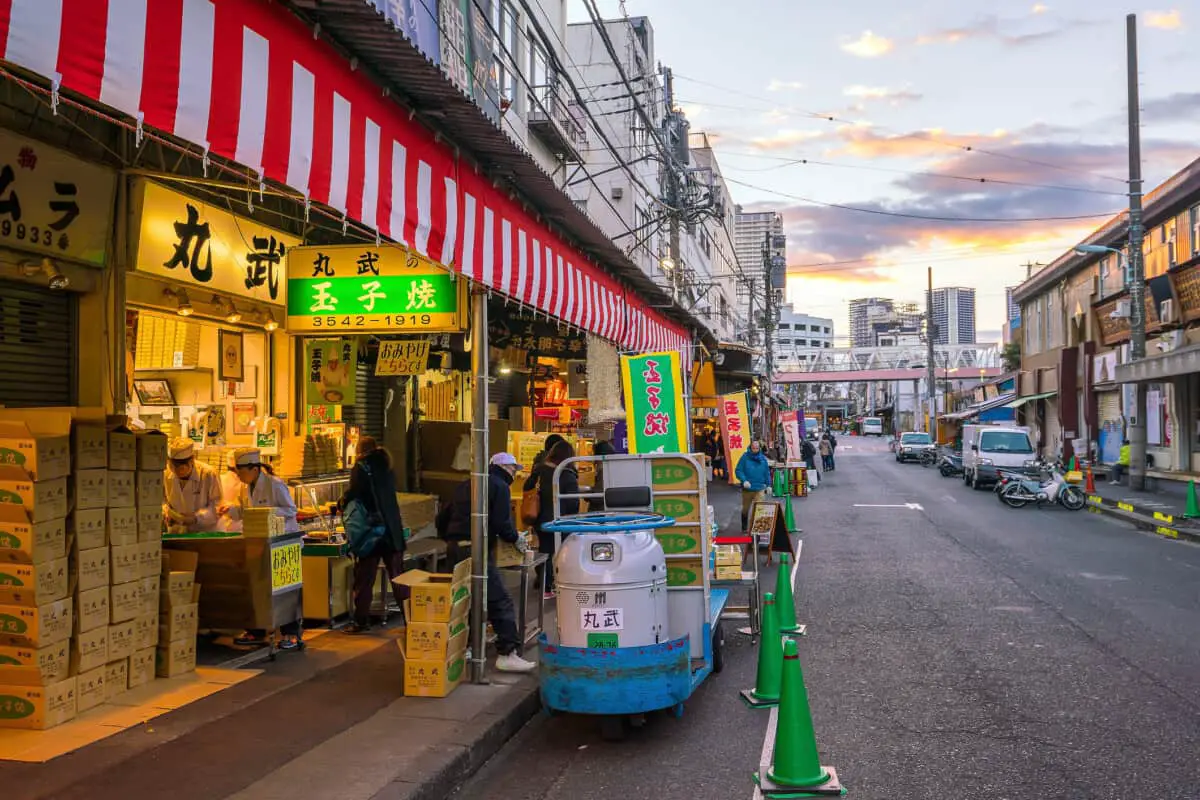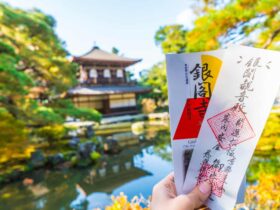Tsukiji is still available to visitors in large parts. The outside market remains open to the public as usual. However, the inner market, which was considered a commercial fish market, is now closed to the public. Despite the migration of most commercial activities to Toyosu Market, much of the Tsukiji experience remains.
Continue reading to discover the ultimate guide on visiting Tokyo’s Tsukiji Fish Market.
What is the Tsukiji Fish Market?
Tsukiji was considered Tokyo and Japan’s largest wholesale fish market. However, it was once the world’s largest for many years.
The Tsukiji Fish Market has been featured in nearly every Tokyo guidebook and is a must-stop shopping destination for most tourists and locals alike.
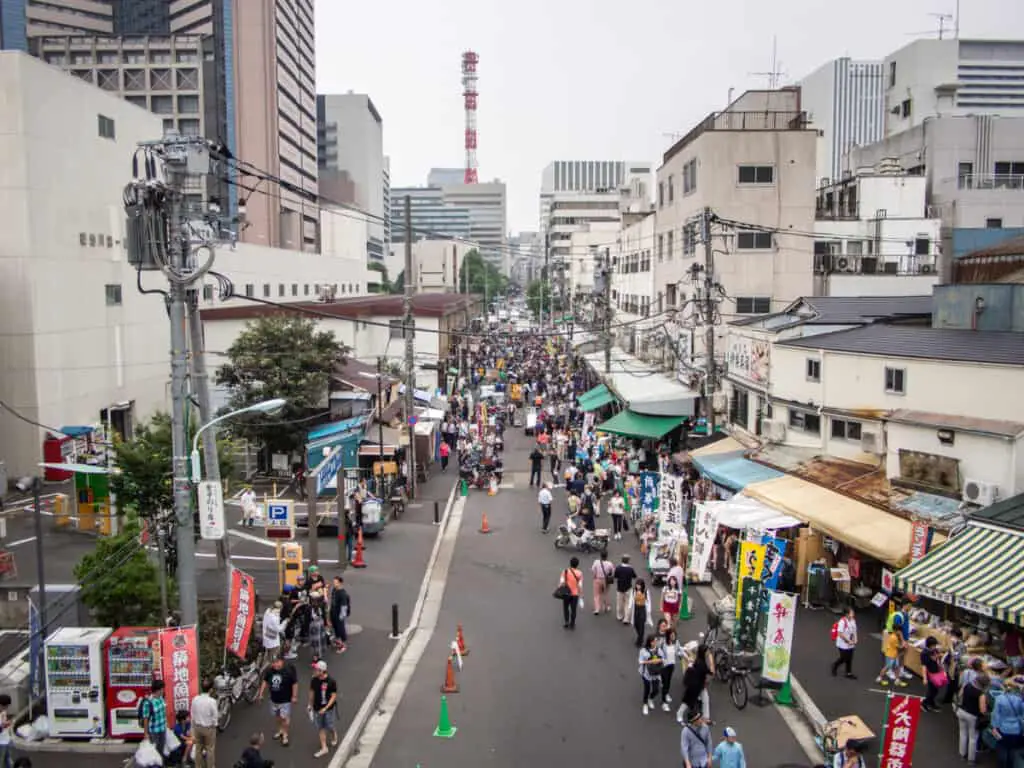
It also had a world-famous tuna auction that took place every morning before the sun rose. Tsujiki attracted tens of thousands of tourists each year because of its vast volume and variety of seafood produced.
Tsukiji’s tuna auction and wholesale inner market have now relocated to the gleaming new Toyosu Market, but the lively outer market area remains a must-see.
A Guide To The New Toyosu Market
History of the Tsukiji Fish Market
Tsukiji Fish Market, which replaced an older market in the Nihonbashi region that was devastated in the Great Kanto Earthquake of 1923, began for operation in 1935 on the site of the previous foreigners’ colony.
The daily tuna auction, in which huge bluefin tuna were auctioned for thousands of dollars each, was the most renowned portion of Tsukiji Market, which was populated with hundreds of tiny wholesale businesses selling anything from sea urchin to fugu.
On October 11, 2018, the fish market relocated to Toyosu and opened its doors. The move had been planned for decades, prompted in part by the decaying buildings where merchants sell 480 different species of fish worth $14 million every day.
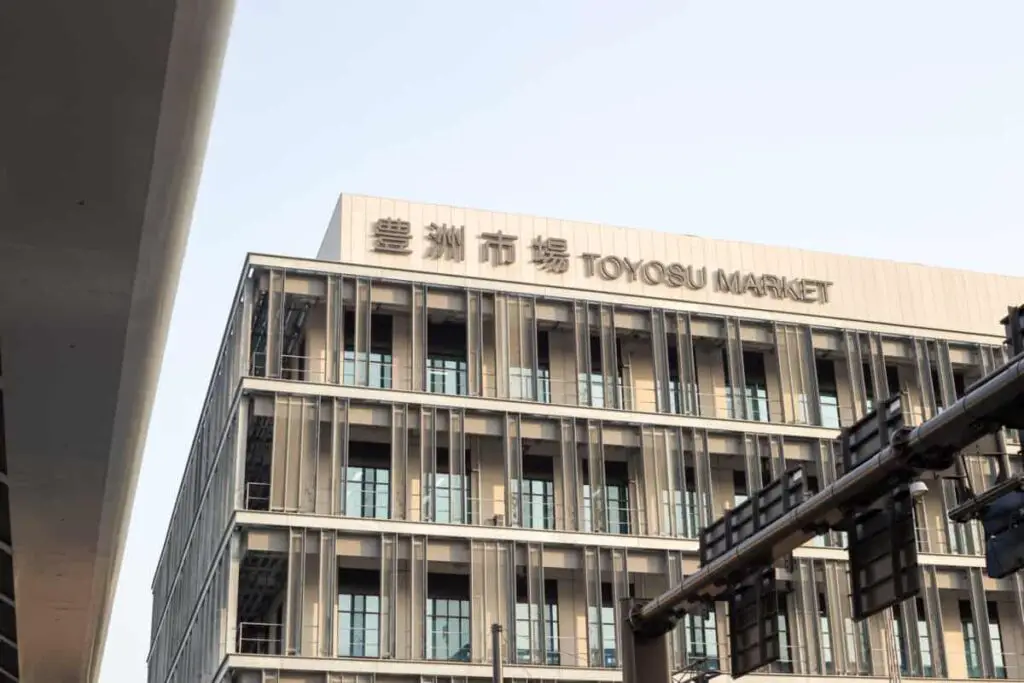
From visiting tunnels or the observation deck, you may look down on the tuna auction or feed yourself at one of the 40 eateries and cafés.
Also, check out the Intermediate Seafood Wholesale Market, which has over 70 shops selling anything from miso and dried seaweed to Japanese knives and souvenirs.
The beautiful view from the rooftop garden offers breathtaking views of Odaiba and Tokyo Bay.
Can Tourists Still Visit the Tsukiji Fish Market?
The Tsukiji Fish Market, now renamed the Toyosu Market, is still considered open to the public. However, a few areas are explicitly restricted for commercial sales and fishermen.
For visitors, this means the tuna auction at 5 a.m. will be the primary item they will miss, which hardcore tuna auction fans will still be able to see at the new Toyosu Market.
Despite the commercial closures and changes, much of the Tsukiji experience remains.
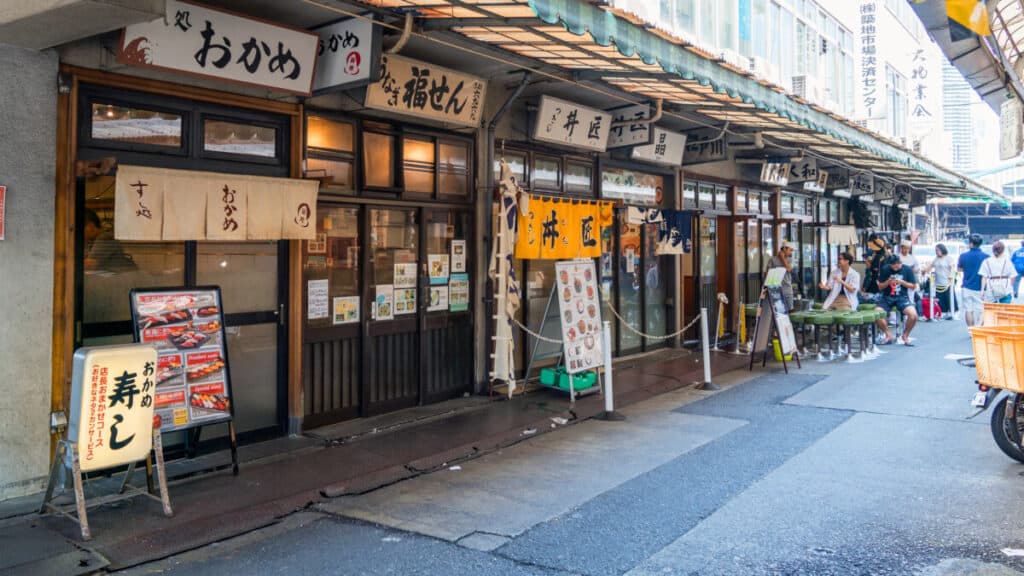
Why Visit the Tsukiji Fish Market?
One should include the Tsukiji Outer Market in their Tokyo itinerary if they enjoy sushi, seafood, or cuisine.
The roughly 492-by-820 feet region comprises small lanes and dozens of tiny stores. Over 300 businesses and eateries in Tsukiji’s Outer Market have remained open and continue to serve customers.
What Parts of the Market Can Tourists Experience?
The public and tourists have full access to Tsukiji’s Outer Marker for shopping and dining purposes. Freshly sliced sashimi, dried seaweed, fruit, vegetables, seafood, sushi knives, cooking utensils, and a plethora of other culinary delights are available at the Outer Market.
The Outer Market stores have long-standing partnerships with Tsukiji Inner Market vendors who relocated to the new Toyosu Market and now buy the same fresh seafood every morning.
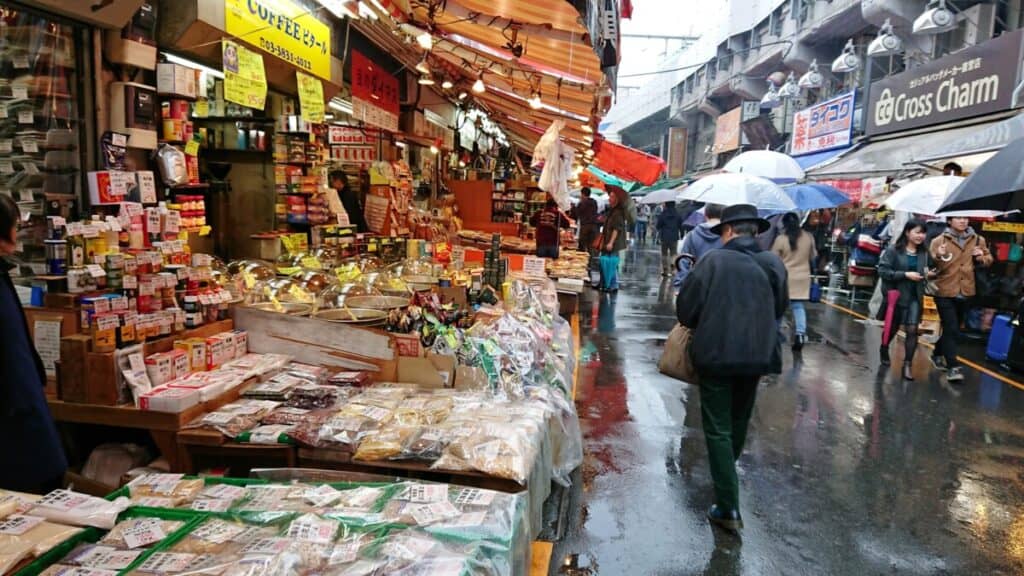
Toyosu is around 1.24 miles from Tsukiji’s Outer Market in a straight line.
The vendors transport their wares over from the new market and exhibit them in the exact old spot of the Outer Market, as fresh as ever.
Visiting in January for the Annual New Year’s Tuna Auction
This world-famous, unique New Year’s Day tuna auction is a tradition that continues today at the Toyosu Market. Restaurateurs race on New Year’s morning to pay the most for the first tuna on January 1. Tuna auctions staged in the inner industrial sector of Tsukiji draw a variety of high-rolling purchasers.
Since the New Year’s sale is considered fortunate for business, it generally commanded greater prices than usual.
Sushizanmai owner Kiyoshi Kimura bought the first tuna at Tsukiji’s auction on January 1 for an astonishing 36.45 million yen (about $310,000 USD).
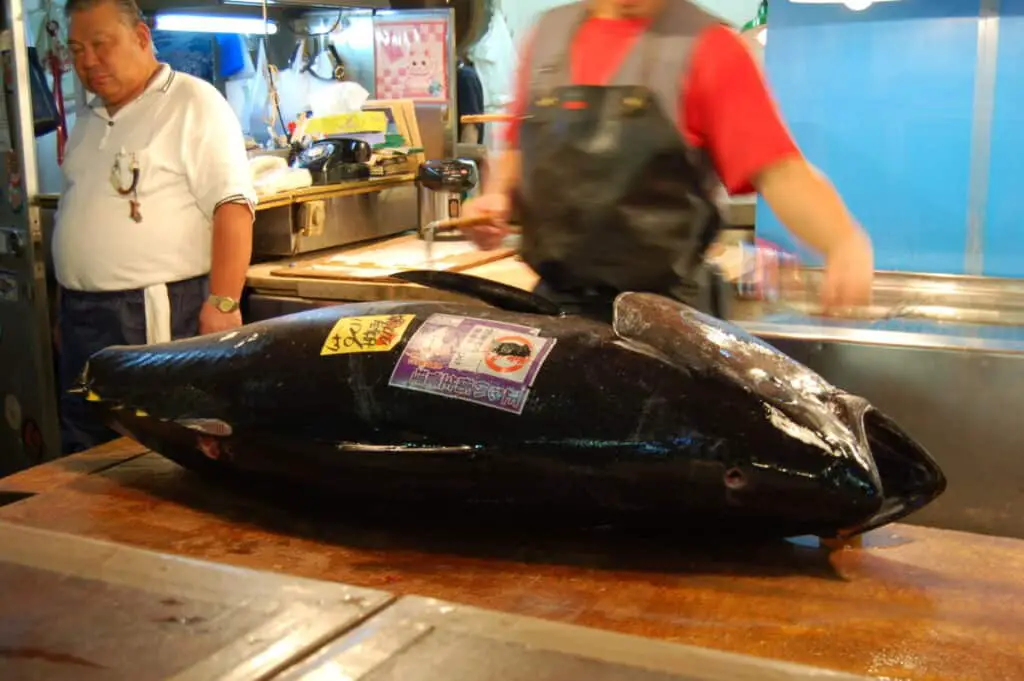
Getting up at 2 a.m. to join a small number of guests allowed to witness the tuna auction quickly became a favorite pastime among international tourists to Tokyo.
Locals and tourists tend to join even larger lines outside Sushi Dai and Daiwa Sushi in the Tsukiji Inner Market once the auction had ended to enjoy a sushi breakfast among the bustle of the market action.
What was the Tsukiji Inner Market, and Why is it now Off-Limits to the Public?
The licensed wholesale market is the inner market, where about 900 licensed wholesale merchants maintained modest stalls and where the auctions and the majority of the fish processing occurred.
This sector of the fish market is now closed to the public since it is not only the official business section for buying, selling, and trading fish commercially, but it is also where certain fish are scaled and processed.
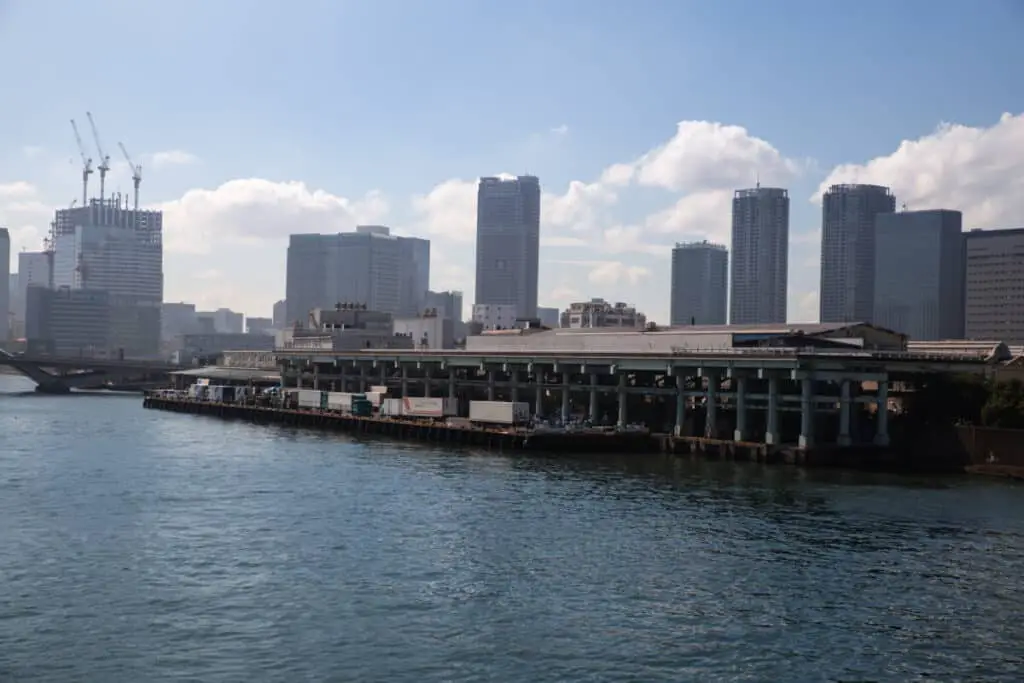
Allowing the public to access the inner market would allow for less sanitization. Cleanliness must be a priority when processing any fish to ensure no bacteria can be transferred from the processing area to the person consuming the fish.
Getting a Bite to Eat in Tsukiji’s Outer Market
Several restaurants serve delectable seafood varieties ranging from kaisendon to sashimi, with many catering to the budget-conscious. Both breakfast and lunch are options.
Many restaurants, such as Tsukiji Sushidai Honkan, provide nigiri sushi, in which the chef slices up fish and rolls it out in front of your eyes.
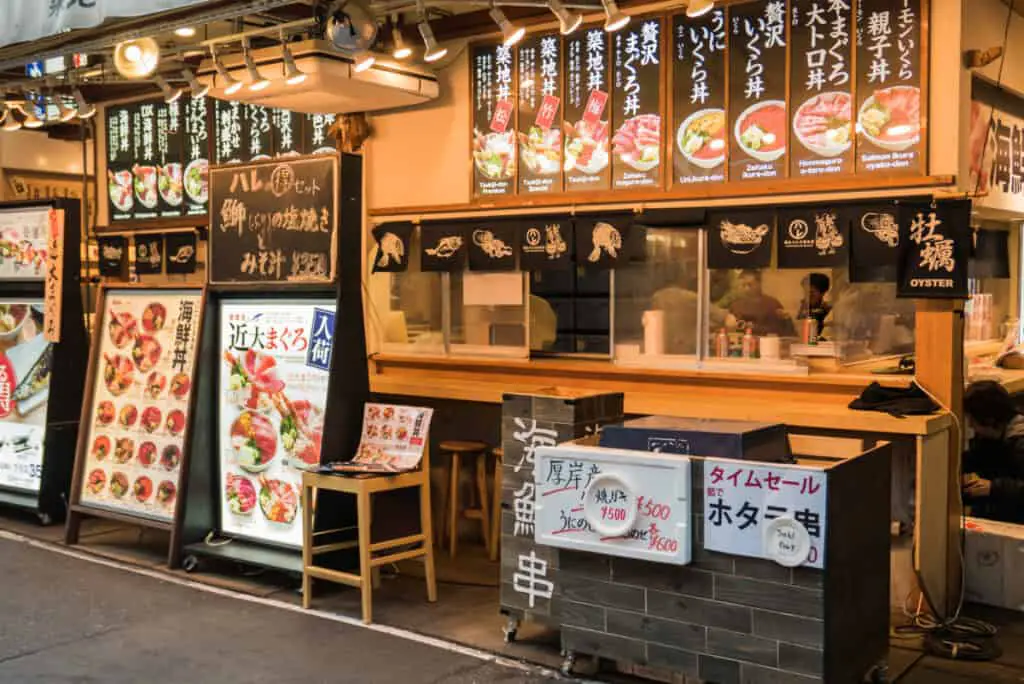
Others, such as the quaint Okame, have a standing-only policy, where you order sushi by component and eat it while rubbing elbows with the people next to you.
The Tsukiji neighborhood is loaded with excellent alternatives to cater to any seafood lover, from ramen, yoshoku, or even fried pork cutlets. There are plenty of cuisine alternatives, from beef and rice bowls to matcha ice cream.
Eating Sushi at Tsukiji’s Outer Fish Market
In Tsukiji, you may get a fresh slice of traditional Japanese sushi from almost any storefront. After all, it’s minutes from one of the world’s top fish markets, so no matter which food item you select, everything will be very fresh and delicious.
The Outer Market offers a wide range of options. Tourists may line up to three hours for “the greatest” sushi in Tokyo, but unless you’re a sushi connoisseur on a mission to eat at a certain location, you’ll likely have an equally excellent lunch wherever you choose to eat.
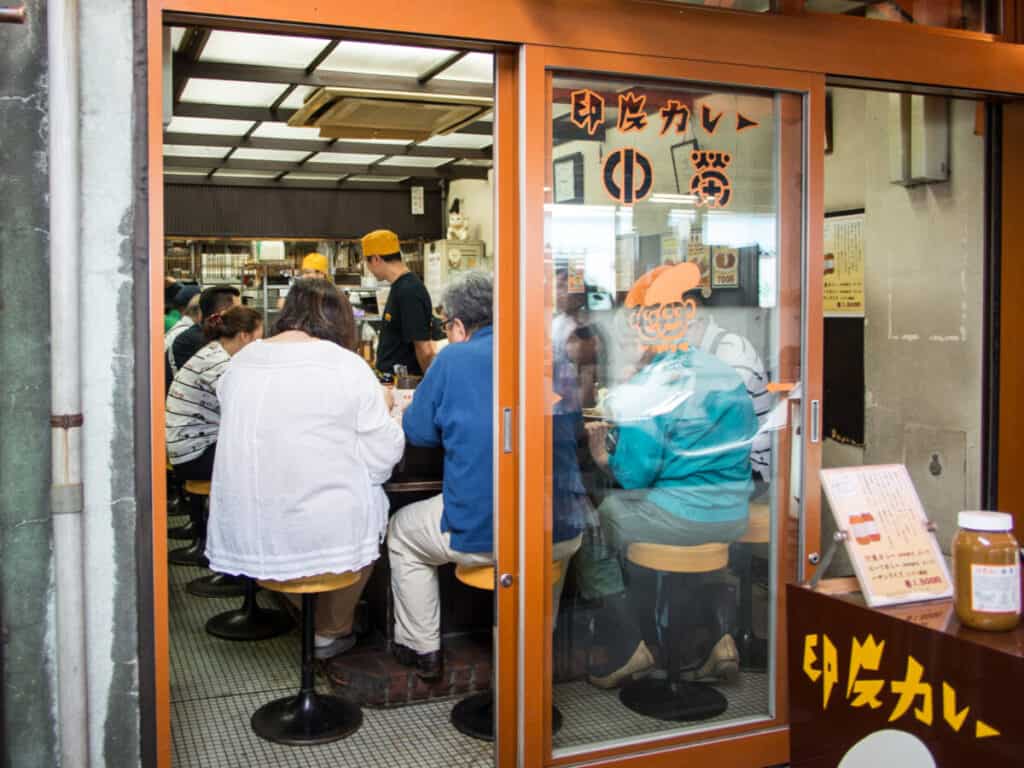
Ensure you buy some of the fresh sashimi sold by several of the fishmongers, as well as any other cuisine you may desire, for a terrific low-cost way to experience the market.
The fresh fruit, onigiri, and bento boxes sold in the booths have been praised by tourists.
On the third level of the market buildings on the west side of the Outer Market, you may sit and consume your food.
Booking a Tour to Get the Most from Your Experience at Tsukiji Fish Market
Take a cuisine tour to make the most of your exploration of Tsukiji. If you go to the Plat Tsukiji general information center, you may select tours to fit all interests and budgets, ranging from market samples to sushi lunches.
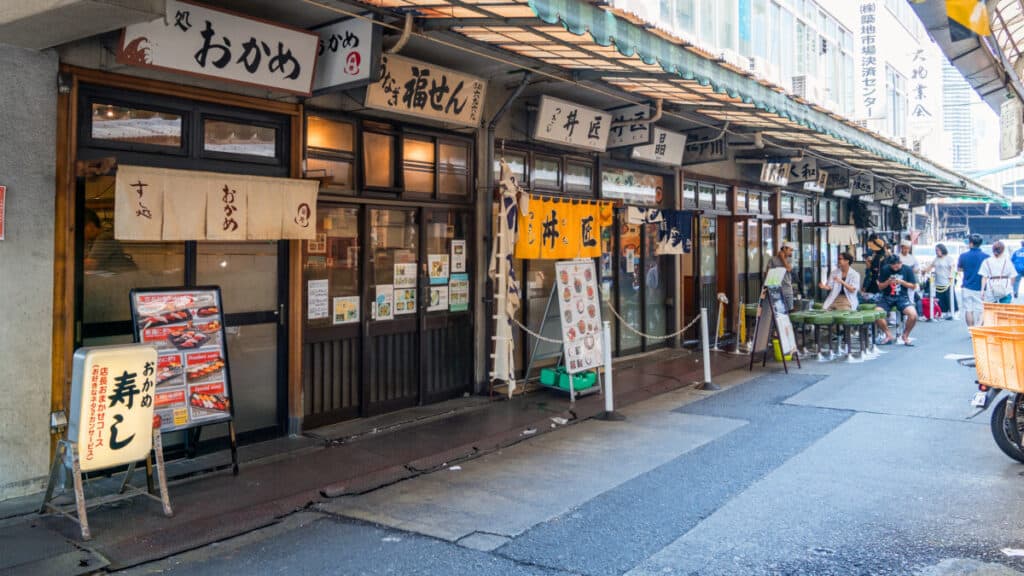
While the outer market area of Tsukiji Fish Market is a free attraction that is quite delightful to visit on your own, you could be interested in embarking on a tour with an independent local guide to make things a bit more fun or instructive.
There’s a lot to choose from. For example, as part of the experience, you may go on a cuisine sampling tour.
When Can You Visit Tsukiji Fish Market?
Tsukiji outer market is open every day, although it’s best to go from Monday through Saturday because certain businesses are closed on Sundays. Several restaurants and businesses open for breakfast as early as 6:30 a.m., if not earlier, and close by 3 p.m. Stopover during the day to witness the market at its busiest.
How To Get to Tsukiji Fish Market?
Tsukiji Outer Market Location Via Google Maps
Tsukiji Station, Tsukijishijo Station, and Higashi-Ginza Station are all convenient ways to get to the Tsukiji district. It’s also close to Ginza and Shiodome, and it’s well-connected to the rest of the city and major airports.

